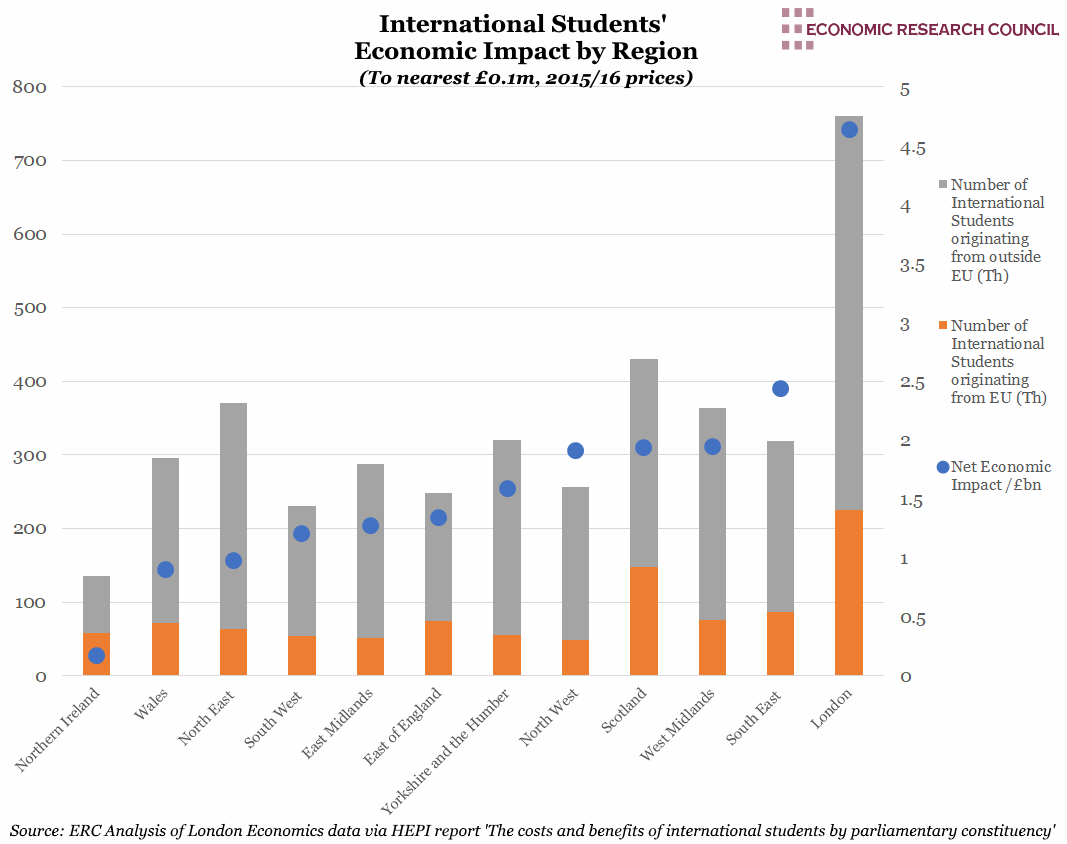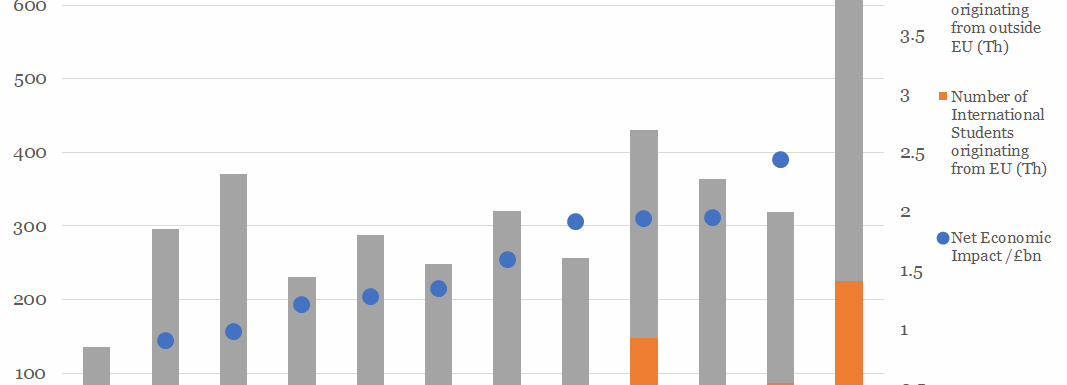
Summary
The chart shows the economic impact of the 2015/16 cohort of international students, who on average, contribute £1.7bn to each region displayed. Of the international students in this cohort, an average of 25% originate in the European Union. The chart also shows the vast variation between regions. An example is Northern Ireland, which hosted around six times fewer international students than London, but received an economic benefit 27 times lower in absolute terms (£0.17bn in NI and £4.64bn in London). Calculated per citizen, the economic impact ranges from just £92 in Northern Ireland to £549 in London, which reflects the both the relative population sizes as well as the cost of living and study in the regions. There is also regional variation in the proportion of EU students: Northern Ireland attracts the highest proportion of EU students (42%), whereas in the regions of Yorkshire, the East Midlands, the North East and North West, EU students constitute under 20% of non-British students.
What does the chart show?
The bars display the total number of international students in thousands who registered for study at UK universities in the year 2015/16 by region. The orange section of the chart shows the proportion originating in the EU whereas the grey section shows those that originate outside the EU. The blue dots reflect the net economic impact of all international students in this cohort on each region in £billions, rounded to the nearest £0.1 million. The data originates from a report by Higher Education Policy Institute titled ‘The Costs and Benefits of International Students by Parliamentary Constituency’.
Why is the chart interesting?
Although the chart highlights the scale of economic contribution made by international students, estimated as £1m per 11 students, it shows that London takes the lion’s share of the benefit. This financial benefit may be a driver the capital’s more pro-European attitude compared to the rest of the country, shown in the Brexit referendum results.
During the months since Britain’s vote to leave the European Union, the issue of immigration has become increasingly significant. Within this debate, the question of international students’ inclusion in overall immigration figures has been contentious. The government has pledged to reduce immigration, currently including students, to the tens of thousands. Official figures released in August 2017 have galvanised the case for omitting students from immigration numbers. Contrary to estimates of over 100 thousand, the figures showed that only 5 thousand students overstayed their UK visas following the end of their courses. Critics of the focus on foreign students have cited not only the huge economic contribution made by international students displayed above, but also the value of ‘soft power’ associations fostered by international study. With countries such as China, the US, India and Saudi Arabia among the top 10 non-EU states sending students to the UK; the value of these relationships fostered by studying in the UK should not be overlooked.

